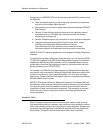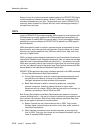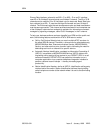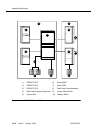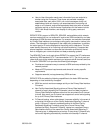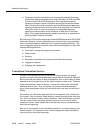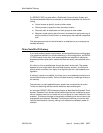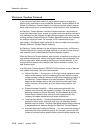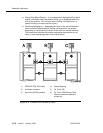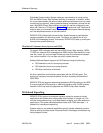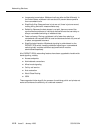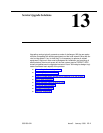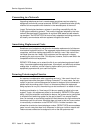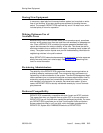
Distributed Communication System — Integrated SDN
and Non-Integrated SDN
Issue 5 January 1998
12-19555-230-024
used as trunks) in any end-to-end private network routing pattern. Limiting
the number of satellite hops may be desirable for controlling transmission
quality or call delay in both voice and data calls.
■ Automatic Transmission Measurement System — You can use this feature
to perform routine and on-demand maintenance tests on facilities in the
Electronic Tandem Network.
■ Enhanced Trunk Signaling and Error Recovery — The reliability of
Electronic Tandem Network calls is improved by allowing a trunk call to be
retried on another circuit when signaling failures occur.
Distributed Communication System —
Integrated SDN and Non-Integrated
SDN
For a single-location or multi-location company that requires several systems,
Distributed Communications System (DCS) may be the answer. DCS is a network
arrangement of private switches, referred to as nodes. The maximum number of
nodes that can be in a DCS varies from 20 to 63, depending on the particular
configuration of switches. DCS nodes can be physically located in the same
building, spread across a campus, or scattered across the country or around the
world. Tie trunks interconnect the switches that serve the DCS complex. The
tie-trunk network may be configured as a tandem tie-trunk network, a main/satel-
lite/tributary network, or an Electronic Tandem Network. The links connecting a
Distributed Communication System may also be provided across a Software
Defined Network.
The functions and features of Distributed Communication System are made pos-
sible by the use of an advanced X.25 (BX.25) inter-processor data link connect-
ing each switch, allowing call-processing to be passed from one switch to
another. The data link supplies selected feature transparency and efficient utiliza-
tion of facilities that can be shared.
Feature transparency means that features work the same from the user’s per-
spective, whether the telephones involved are assigned to the same switch or
different switches. Users in a DCS can dial each other with four or five digits as if
they were all on the same switch.
Here are just a few examples of feature transparency in a Distributed Communi-
cation System:
■ DCS With Reroute — Distributed Communication System with Reroute
optimizes trunk usage for certain DCS features.
■ Leave Word Calling — Allows you to touch a button on your voice-terminal
and leave a standard “call me” message with your name and phone
number. When your DEFINITY ECS is linked with other switches in a DCS,
you can call any employee in your company and press the Leave Word
Calling button to automatically leave a message requesting a call back.



